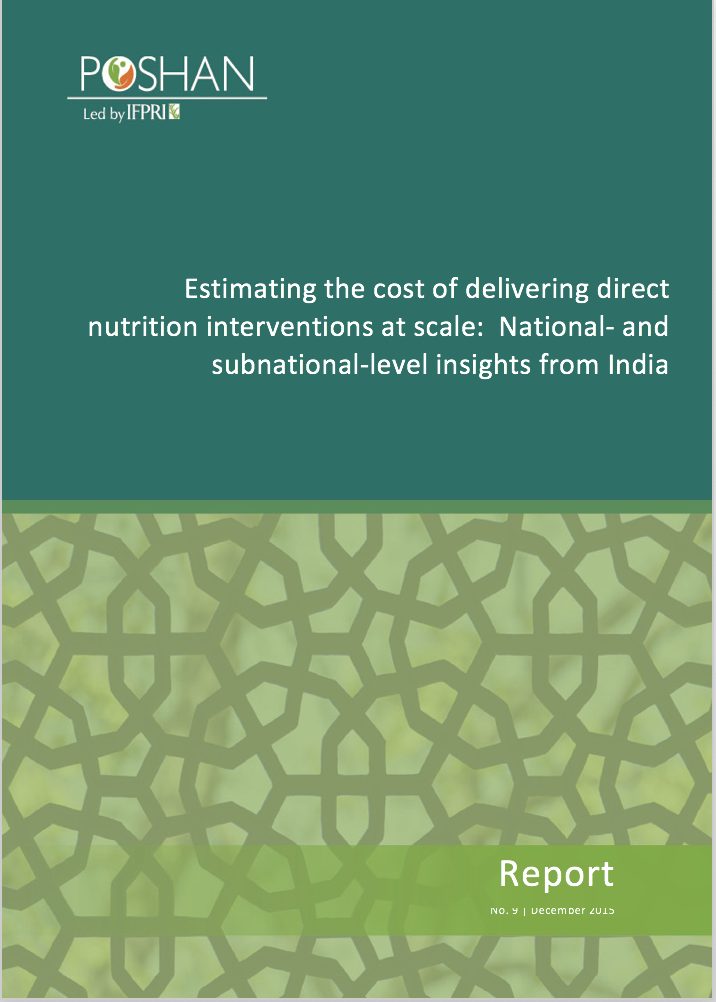 More than a third of all children under-five in India are still stunted (RSOC 2014), and other forms of undernutrition also remain a challenge. Our previous analyses indicate that two national programs— the Integrated Child Development Services (ICDS) and the National Rural Health Mission (NRHM)— are designed specifically to cover a set of nutrition-specific interventions; both these programs also extended their coverage in the past decade. However, in a country as diverse and populous as India, universalization of these programs remains a distant dream, with coverage limited by challenges such as financing, implementation capacity, limited demand for nutrition interventions and more.
More than a third of all children under-five in India are still stunted (RSOC 2014), and other forms of undernutrition also remain a challenge. Our previous analyses indicate that two national programs— the Integrated Child Development Services (ICDS) and the National Rural Health Mission (NRHM)— are designed specifically to cover a set of nutrition-specific interventions; both these programs also extended their coverage in the past decade. However, in a country as diverse and populous as India, universalization of these programs remains a distant dream, with coverage limited by challenges such as financing, implementation capacity, limited demand for nutrition interventions and more.
In order to examine the role of financing as a limiting factor related to program coverage, POSHAN sought to estimate the cost of scaling up two packages of nutrition-specific interventions to fully cover target populations in the 35 states and union territories of India. The SUN package (Horton et al. 2010), covers several globally recommended interventions while the India Plus package is a set of 14 interventions that are currently encompassed in India’s policy framework (Avula et al., 2013).

The authors used recent demographic data to estimate target population sizes and to provide state-specific costs of delivering both sets of interventions. The authors then attempted to make comparisons of ‘at scale’ cost estimates with current expenditures for the food supplementation sub-set of the interventions. This expenditure analysis was conducted by using government-reported expenditure estimates.
Here are some highlights:
- At 2014 target population levels, it could cost about US$ 4.2 billion per year for the SUN interventions and US$ 5.9 billion per year for the India Plus interventions, to be delivered at scale across all states in India.
- Costs are not spread equally across India: Some states require significantly more resources than other states, depending both on base target populations and the burden of severe acute malnutrition.
- When assessing expenditures against estimated costs for food supplementation, the authors find that current coverage levels are lower than would be needed to assure full universalization
This is one of the few studies that attempt to quantify the financial investments needed and that provides state-level cost estimates, which can be considered in decision-making processes at the national and state-level.
Click here to access the full report.


